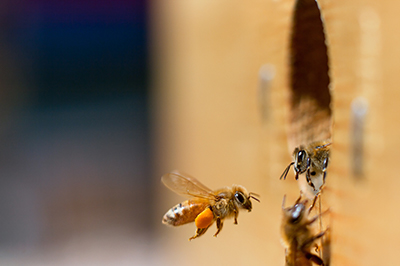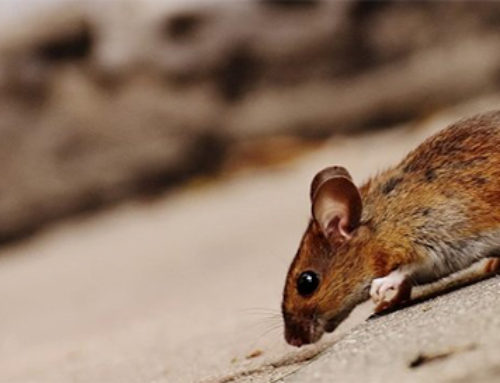
Find yourself wondering: Is Pest Control Safe?
Many homeowners with a pest problem want to know if pest control is safe. This is especially true for those who have children or pets in their home. Can you safely solve your pest predicament?
The key is to educate yourself on the do’s and don’ts of pest control. Learning about the pests you have, and the options that are available to control those specific pests is the first step in safely removing them.
In this article, we will go over the steps you should take if you have a pest infestation and the potential dangers of pest extermination methods. In addition, we will cover pesticides, and when you should (or shouldn’t) use them, and the risks of DIY pest control.
Pest Prevention First
When pests invade your home, they bring in bacteria and diseases that can get you, and everyone inside the home, seriously ill.
Due to that fact, it is necessary to do all you can to prevent a pest infestation before it occurs.
Here are the top pest prevention tips:
- Keep all water and food sources in a safe and contained location in your home. People with pets need to be especially careful when it comes to leaving pet food or water bowls out in the open inside the home. It’s best to seal these types of items, so that they’re un-accessible to critters or other pests.
- All food items in the pantry or cupboards should be stored in plastic or glass containers with tight lids. It is not enough to simply roll the bag inside a cereal box down. If you suspect you have a pest problem, you must keep all food items tightly sealed.
- Garbage cans containing food scraps should be kept inside a tightly covered trash can, preferably with a lid. Trash bags should be taken out frequently and replaced with new trash bags.
- Any leaky plumbing should be fixed right away. There should be no still water collecting anywhere in the home. This includes the trays under your potted plants.
- Leaving clutter around your home is like asking pests to come on in and find a hidden place to breed. In addition, clutter makes getting rid of pests a much harder task. Rid the home of any old stacks of newspaper, magazines or cardboard.
- Be observant – cover any and all holes, cracks or crevices where pests could wiggle their way into the home and hide. Often times, rodents squeeze their way through crack openings in cabinets and baseboards. Use steel wool to fill spaces around pipes, and cover any additional holes with wire mesh.
- Educate yourself regarding the pests that live in your area. Ask neighbors about any pest problems they’ve had, and do research on how to prevent an infestation of that type of pests.
- Before you bring in any packages or boxes, check in and around them for pests.
If you already have a pest infestation, professional pest control services are an absolute necessity to prevent further damage and spread of disease.
What Are The Potential Dangers Of Pest Extermination
Health Risks
Symptoms of acute poisoning from pesticides can occur shortly after exposure, and can include the following:
- Dizziness
- Headache or migraine
- Nausea
- Vomiting
- Stomach cramping
- Diarrhea
- Excessive eye watering and/or redness with eye irritation
- Blurred vision
- Sweating
- Excessive saliva production
Symptoms of chronic poisoning from pesticides:
- Fatigue
- Weakened muscles
- Decreased brain function – difficulty remembering things or concentrating
- General feelings of sickness (similar to the flu)
Environmental Risks

Fact: There are very strict rules and laws in most municipalities against using chemicals on honey bee hives.
Since honey bees are an essential part of the environment, the use of chemical treatments to get rid of them, is seriously frowned upon. In fact, any pest control treatment used on honey bees is heavily regulated. Pest control professionals are trained and certified in removing honey bee hives without causing any damage to the bees or their environment.
When pesticides are used improperly, they can potentially leak into water supplies, vegetable gardens or the air inside your home. On that same note, most DIY pest control chemicals lead to the contamination of both the air and ground around your home.
Monetary Risks
There is a plethora of over-the-counter pest chemicals and supposed methods of pest prevention that claim to be entirely environmentally friendly.
Some may be effective for a time, but oftentimes they are not nearly as effective as the treatments provided by a professionally trained and experienced pest control expert.
So, what does this mean for you?
Say you decide to attempt to take care of a pest infestation yourself through DIY methods. There is a good chance the infestation returns, and you end up having to dish out extra money for additional treatments. All in all, it would be a lot of money, a lot of time and a lot of effort for you.
Another risk of DIY treatments is that they are usually non-effective. This can result in the pest infestation worsening, which leads to additional damage and costly property repairs.
The Risks Of Do-It-Yourself Pest Control
Thinking of conquering your pest problem by yourself?
You may want to think again.
Pest control treatments, especially DIY ones, can bring greater worries than a pest problem to the table. Products sold on the shelves of local grocery stores often contain toxic and dangerous ingredients. And, when used by an non-professional, can cause an array of health problems and damage to your home. Without proper training, these products can cause a negative impact on the environment, potentially impact pets, and the use of these chemicals around children without the proper background can result in serious illness, or even death.
Licensed pest control companies are required by law to closely follow local, state and nationwide regulations. Pest control professionals are thoroughly trained in how to correctly, effectively, and most important – safely, apply the right chemicals, in the right amounts, end your pest control issues.
Of course, the internet is chock full of do-it-yourself pest control solutions and how-to videos. Some claim to be environmentally friendly, or just as effective as a professional pest control treatment. However, regardless of whether a pest treatment is applied by a professional or by yourself, effective pest control chemicals often contain harmful chemicals. And when there are harmful chemicals around, there are also major health risks. These health risks increase significantly when the chemicals are applied by someone who has not been properly trained, or experienced, in applying them safely.
All About Pesticides

What are pesticides? What are pesticides made of?
According to the Online Dictionary, Pesticides are a substance used for destroying insects or other organisms harmful to cultivated plants or to animals.
Pesticides are used to control pests, including garden weeds. Insecticides (bug killer), herbicides (weed killer), and fungicides (fungus killer), rodenticides (rodent killer), and antimicrobials (bacteria and/or virus killer) are all different types of pesticides.
Pesticides are made of, what the federal law calls, “inert ingredients”. They are combined with active ingredients in order to make a pesticide product. Inerts are compounds, chemicals, and other substances including common food commodities (oils, spices, herbs), and some natural materials (beeswax, cellulose).
Are pesticides safe for pest extermination?
Pesticides are only safe for pest extermination when they are used by a trained professional who has experience with the use of these types of chemicals.
How to safely dispose of pesticides and pesticide containers
Most pesticide containers provide instructions for how to properly dispose of them. Look on the bottle label for these instructions.
Most communities have a general household hazardous waste collection drop-off that will accept unwanted pesticides. Call your local waste disposal authority for more information about your community drop-off spot.
DISCLAIMER
The Department Of Agriculture states: The regulation of pesticide use and application is a top priority. The Pesticide and Environmental Programs Division is responsible for licensing and training pesticide applicators, overseeing worker protection, registering pesticides for sale throughout the states and working to minimize unnecessary impacts by pests to agriculture and society in general while protecting human health, the environment, and endangered and threatened species as mandated by the federal law.
The mission of the Pesticide and Environmental Programs Division ensures the proper labeling, distribution, storage, transportation, use, application, and disposal of pesticides within the United States and federal laws.
Through the Advisory Commission on Pesticides and the Structural Pest Control Commission, the division investigates and brings action against those charged with violations of pesticides laws, rules and regulations.




